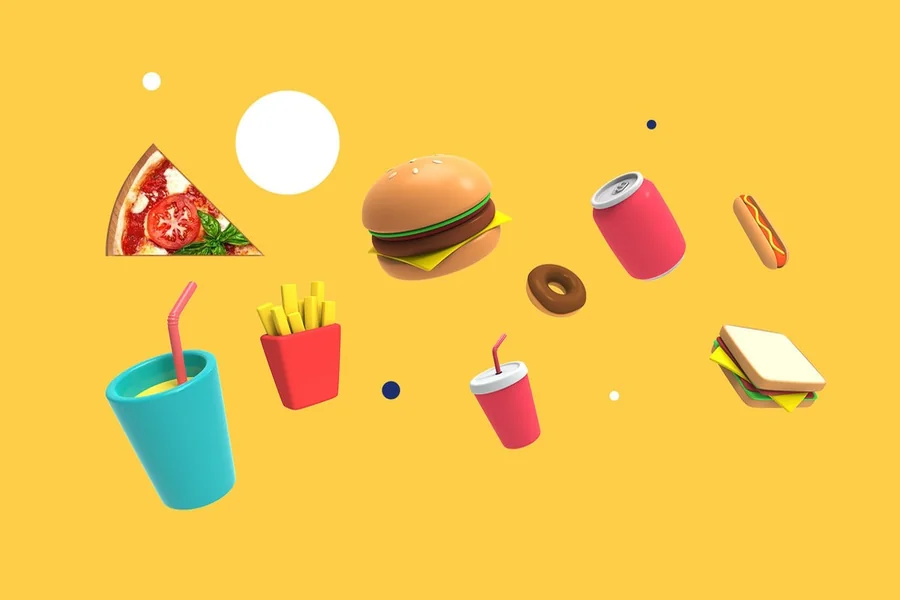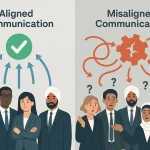Being in-take-only MVP is an MVP condemned to be uninstalled. The user of today wants more than just functionality, they want intelligence, speed and value on the first tap.
Indeed, the percentage of users who desert restaurant apps within one month of using them is over 60 percent when they have to put up with useless directions, slow application, and unsuitable suggestions. By 2025, a restaurant app MVP will have to be more than an online menu, it has to be the operational engine of a restaurant, working in real-time and drawing retention, engagement, and revenue. If you’re planning to launch one, investing in professional restaurant app development services is key to getting the foundation right from the start.
It is not a barebones development of an upcoming platform–it is the real-deal of a full-on laying foundation of a product, created with a mission, sense, and velocity.
10 Features for a Successful Restaurant App MVP
Within this blog, we describe 10 core elements of MVPs in the restaurant app field in 2025, such as recommendations with the help of artificial intelligence, syncing the menu in real-time, location-based reminders, and data-driven analytics
1. Streamlined User Onboarding
People should enter the main features of the application in a few seconds when opening it. The boards during the onboarding process need to be minimized and provide clear access to the possibility of browsing, ordering, or booking without a need to create an account. Repeated inputs can be minimized by using social login, biometric authentication and saved preferences.
In the cases of frequent diners, the onboarding flow will need to change with time based on habits, favourites and history of orders. The ambition is continuous provision of food and service.
2. Live Menu with Real-Time Synchronisation
A restaurant application should never have stale products and pricing. The MVP should have a dynamic menu module which is synchronized with inventory and point-of-sale modules in real time. There should be advertisement intuitively categorized, high-resolution photos, allergens, and diet tags.
Menus have to be searchable and filterable. Animations on specials, seasonal items and out of stock notifications should refresh automatically rather than without refreshes. This enables the customer to make his or her own choices and assists the kitchen to manage expectations.
3. Integrated Reservation and Queue System
Reservations of tables ought to be handled through the same precision as the delivery logistics. The app should show the available tables, and a possibility to specify the time slot, the preference of a seat, and the occasion.
When tables are not accessible, there should be a digital wait list that has live status of the wait. Automatic notifications should be received to announce movement in the queue, waiting time and table preparedness. The interface should be able to be connected to the dashboard of the host, and provide QR-based check-in option of the walk-in guests.
4. Robust Ordering System for Pickup and Delivery
The ordering engine should provide browsing in menus, customisation, dietary instructions, real time calculations of prices, and flexible timeline. The users have to choose between immediate and future deliveries, pickup windows as well as look at location specific availability. Contactless handoffs, delay alerts and status tracking are mandatory.
They should also be made to provide reorder functionality, stored instructions, address book integration on the interface. Everything needs to be reflected on the operations panel of the restaurant so that there should not be mismatches on timing or preparation.
5. Secure Payment Gateway with Multiple Options
The application should be able to accept card payments, transfers via banks, QR codes, digital wallets, and payment tools in regions. Transactions are to be end-to end encrypted, payment acknowledgment should be visible, and order breakdown along with generation of invoices is visible. Tokenisation also has to be used on saved cards.
The flow of tipping options, refunds, and cancelling of the order should be complete at launch. When there are payment errors, they should be automatically reported to the staff, and reconciliation logs should be accessible to accounting teams in the real-time.
6. Loyalty Program with Real Benefits
There must be digital loyalty infrastructure incorporated in the app, and these redemptions can be made visible, with transparent rules and allowances. The customers have to be capable of visualizing what they have already accumulated as far as it concerns the points through the manner in which they were gained and the rewards they can obtain.
Automation of progress indicators, the streak incentive, and the surprise bonus should take place. The company ought to possess the means to set up fidelity triggers on basis of time, day, category or kind of customer. All the reward accretion should be auditable and be able to trace to transactional history.
7. Feedback Capture and Sentiment Insights
A form structured feedback after each order or visit should be initiated on the app and collect data covering user experience in relation to the quality of food, promptness, staff service, and performance of the app. It ought to also have open-text responses in the interface. Escalation workflows should go to customer service when negative reviews are placed.
The feedback must be linked to sentiment analysis engine that will warn the restaurant managers of issues that keep occurring. Such things as reward points to provide an incentive to feedback can increase feedback participation and data richness.
8. Intelligent Notification System
Push notifications need to be relevant in users context and their relevance in operation. This contains scheduled pick up reminders, milestones alerts to the loyal customers and announcement of restock products and weather based offers. The customers should be able to customize what type of alerts is received and when. The messages in notifications should be tested in terms of urgency, tone and practicality.
Marketing messages are not meant to intrude the primary work. The backend is to monitor the open rates, builds, and unsubscriptions to optimise messaging approaches in the future.
9. Business Dashboard for Operations Management
A backend interface of the restaurant also needs to have links to the same data repository as the app. The Restaurant manager pictures, the ordering lists, the reservations, the staff assignments, and the offers, should all be viewable and modifiable on a single computer screen.
The managers should be in a position to increase or decrease prices, stop delivery at high load, or start customer recovery of unsuccessful orders. The visualisations on the data are required to show the peak times, most ordered items, and customer segments. This should be reflected in staffing, supply and marketing.
10. User Analytics and Behaviour Insights
It is important that the app starts to gather anonymised behavioural data already in the first week of its operation. This encompasses tap heat maps, navigation, menu item interaction and order fulfillment levels. Any data of the users should be in a secure place and respectful of data laws in the locality.
These analytics can be used to find gaps of features, bottlenecks in design, and marketing targets. Developers and product managers should be capable to test new functions with live data without running the risk of disrupting the service.
3 Most Trusted Companies That Can Help Build a Restaurant App MVP in the USA
Designing and developing an mvp in the restaurant app is not a task that can be entrusted to a general knower of app development and understand the operation of a food business. These are the three companies, who have been able to deploy food and hospitality solutions with precision and intent.
1. GeekyAnts – San Francisco, CA
GeekyAnts is also a well-known innovator in the React Native community and is best-known in creating one of the most popular UI component libraries called NativeBase in React Native. They are providing profound investments in the framework, and they have been known to produce high-quality mobile solutions at production level, so their expertise on platform specific performance, automation coverage or component level tests is unparalleled.
They created mobile apps on the major restaurant chains in the United States, and a list of clients includes a chain with more than 1,800 restaurants having a consumer-facing delivery application. The work was implemented in the environment of several well-organized sprints, including high-fidelity UI / UX, real-time POS integration, and safe payment processes. Their team also launched full coverage QA through end to end suites to guarantee a trouble-free, dependable launch.
This specialty enables them to be a perfect company to help restaurant businesses develop their first app or expand an existing one.
- Clutch Rating: ★ 4.9 / 5 (100+ reviews)
- Address: GeekyAnts Inc, 315 Montgomery Street, 9th & 10th floors, San Francisco, CA, 94104, USA
- Phone: +1 845 534 6825
- Email: [email protected]
- Website: www.geekyants.com/en-us
2. Sidebench – Los Angeles, CA
Sidebench is a design and development consultancy that excels in joining technical ability, and research driven design. They have provided mobile experiences to clients operating in health or retail or service industries, including the implementation of the hospitality-adjacent entities.
Their solution merits the combination of workflow automation and user-driven design, which might be useful in case restaurants need to have a specific pattern of the reservation process or connections with kitchen management systems.
They are developed with an attention to scalable architecture and tidy interface logic and are native, both on iOS and Android. Although Sidebench has not specialized in the business of restaurants, their experience and large range of abilities enable the firm to serve food businesses with custom backend or analytics requirements.
- Clutch Rating: 4.7 / 5 (45+ reviews)
- Street: 1732 Aviation Blvd, Suite 428, Redondo Beach, CA 90278, USA
- Phone: +1 310 272 5600
3. Cheesecake Labs San Francisco, CA
The Cheesecake Labs is an app developer involved in product development and product design based on React Native, Flutter and scalable backend architecture. They are working on food delivery, logistics, and retail, among others, and previously created consumer-grade mobile interfaces and payment flows. They are oriented toward agile delivery and test-driven development, so they are an ideal partner to companies that under time pressure need to build a MVP.
When it comes to restaurant customers they provide assistance in third-party API integration in order to update menu in real-time, geolocation, and tracking of delivery orders. They have a team that gives specific plans of sprint and focuses on documents that ensure there is co-ordination of the stakeholders at an early stage of app development.
- Clutch rating: 4.6 / 5 (65+ reviews)
- Address: 995 Market Street, San Francisco, CA 94103, USA
- Phone: (415) 8701893
Conclusion
The well-working restaurant app MVP is designed to operate with real business processes in the first days. Any feature has to be purposeful, technically valid and ought to be used when operating in real operating conditions. The above ten listed features are not optional add-ons. They are cornerstones that can support restaurants in their serving, retaining, and gaining customer base. MVP created using these principles delivers value in the short-term and outlines what should be improved on a going forward basis.






